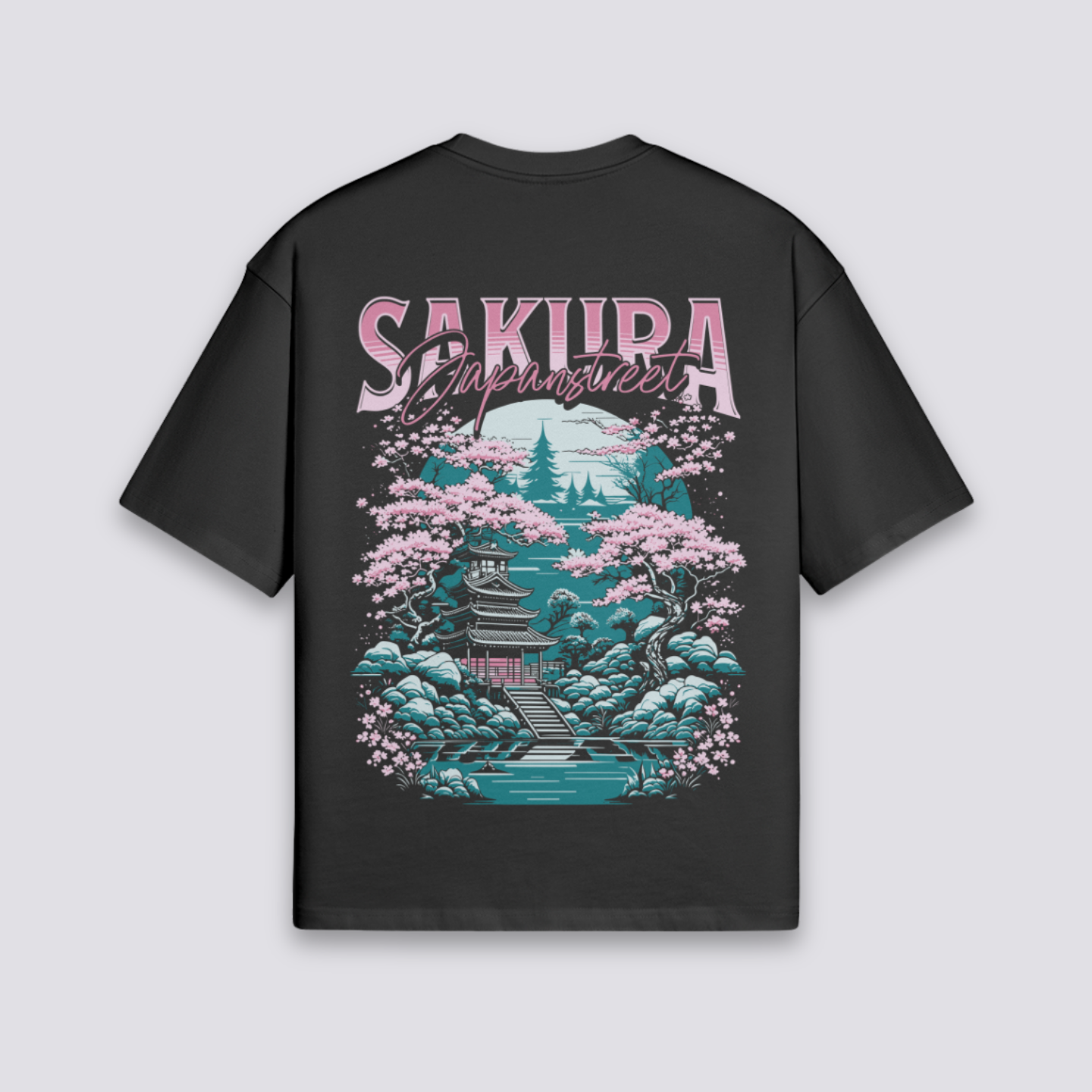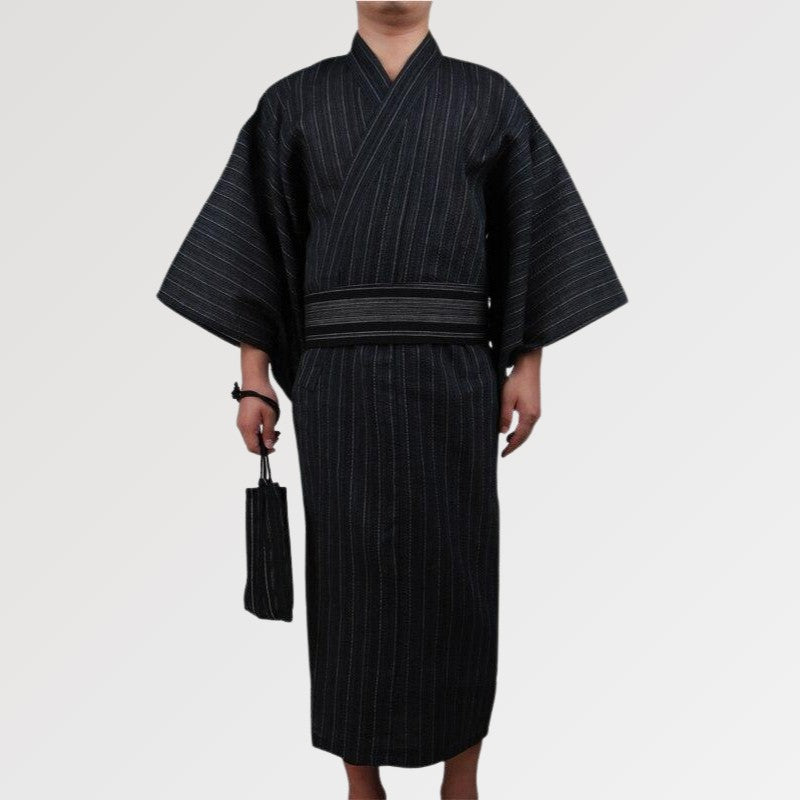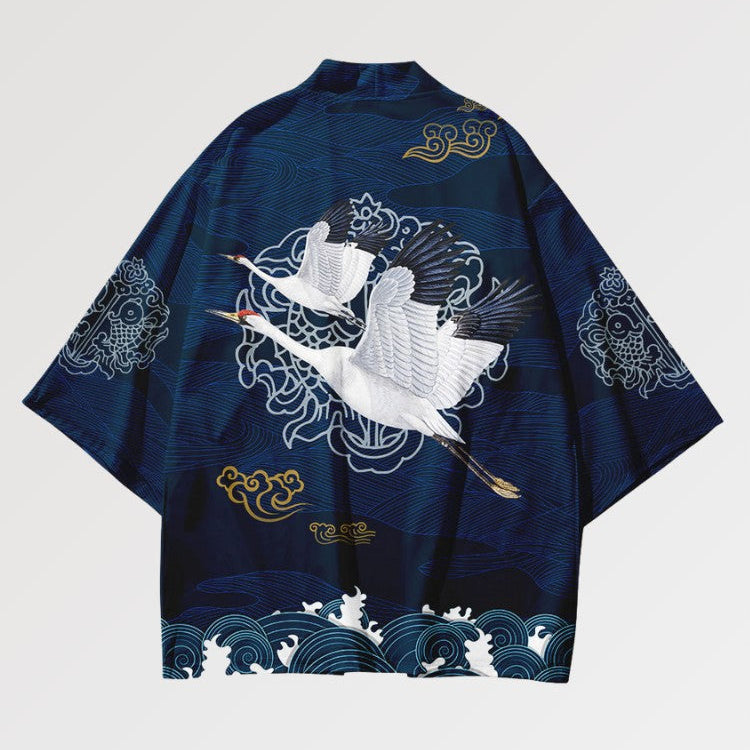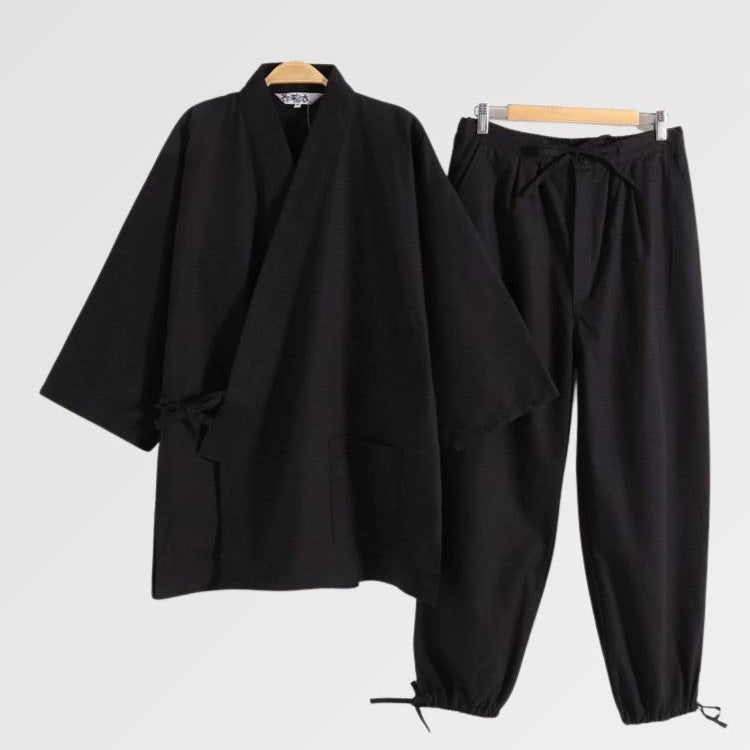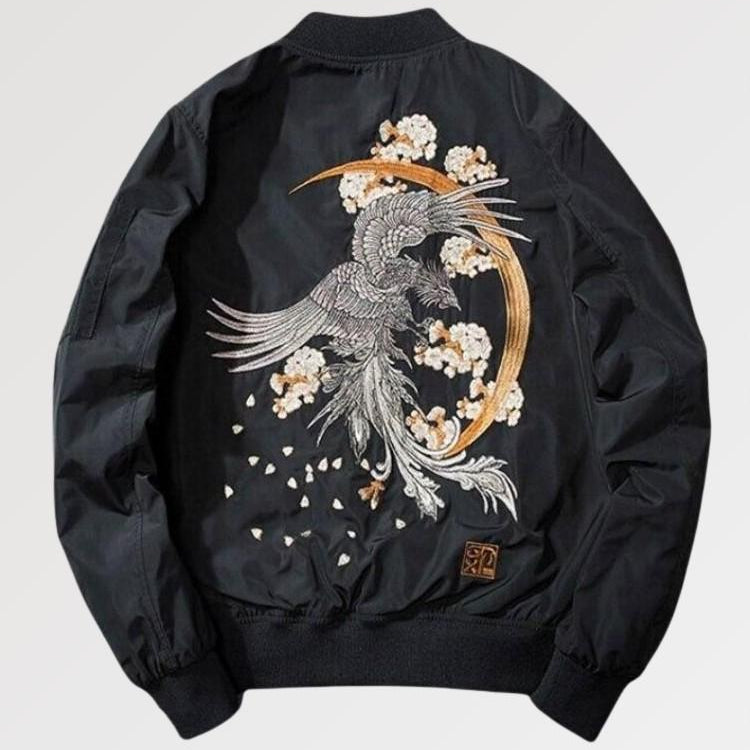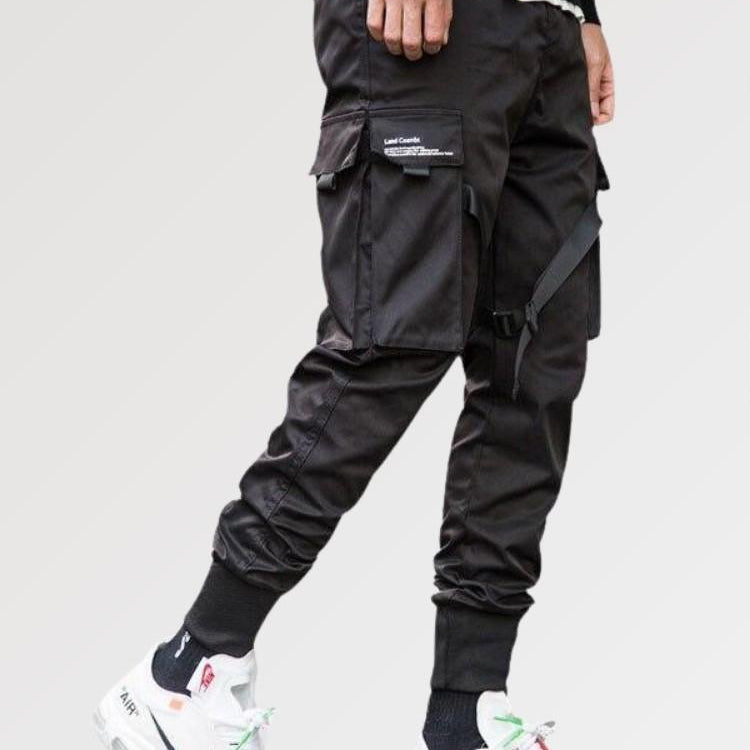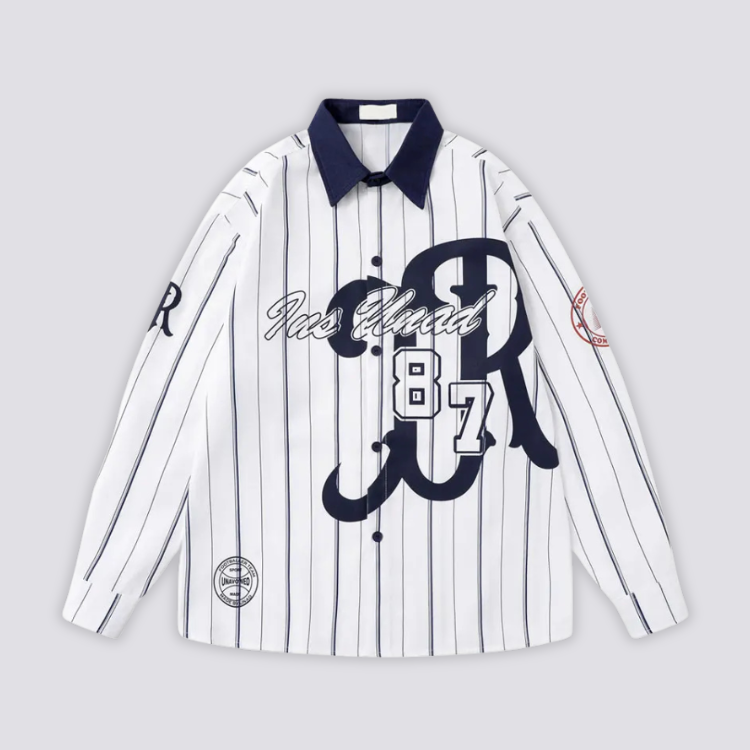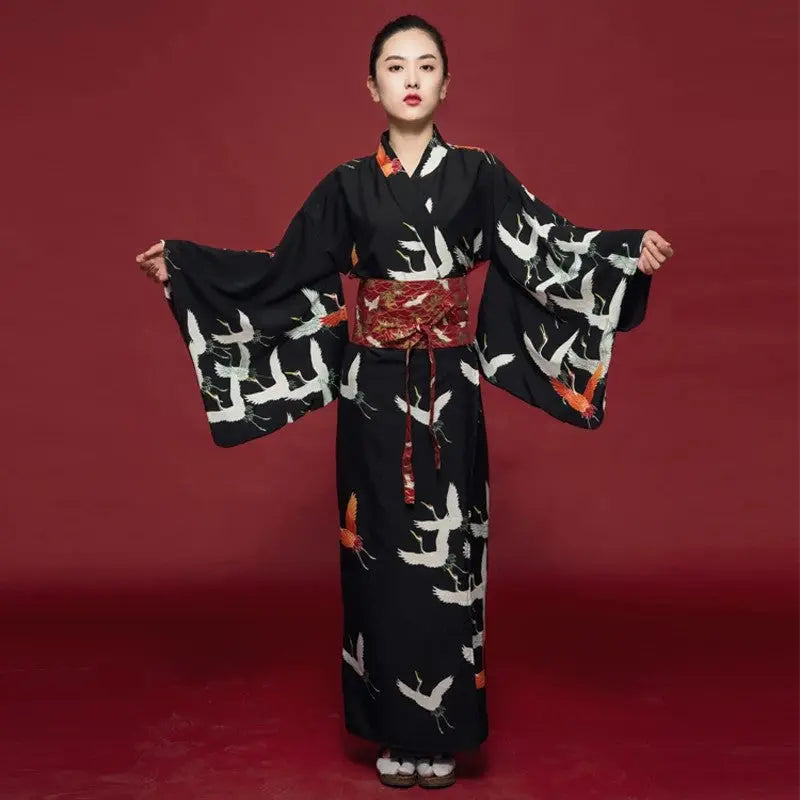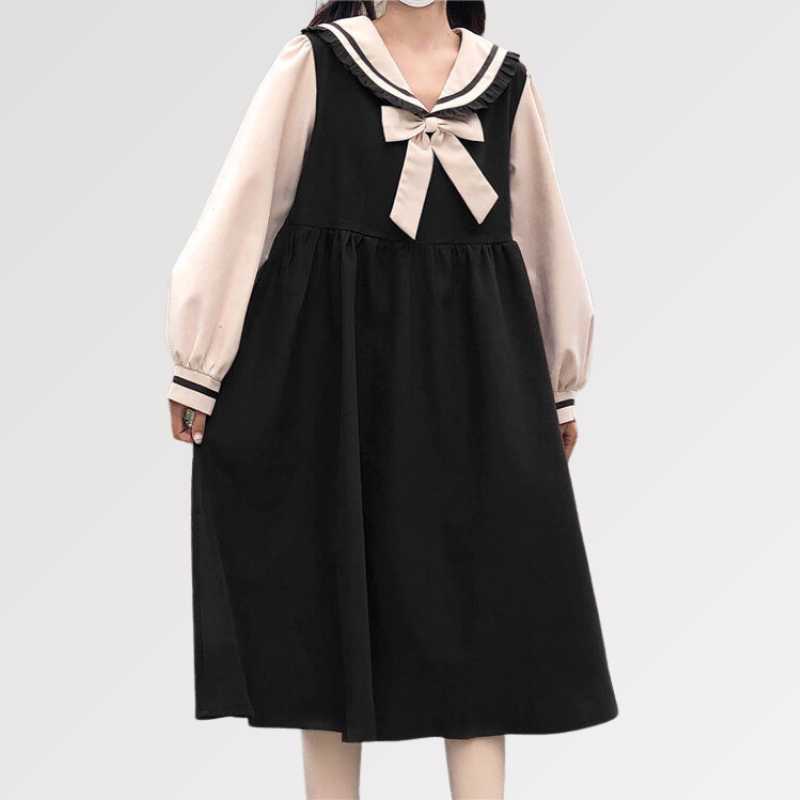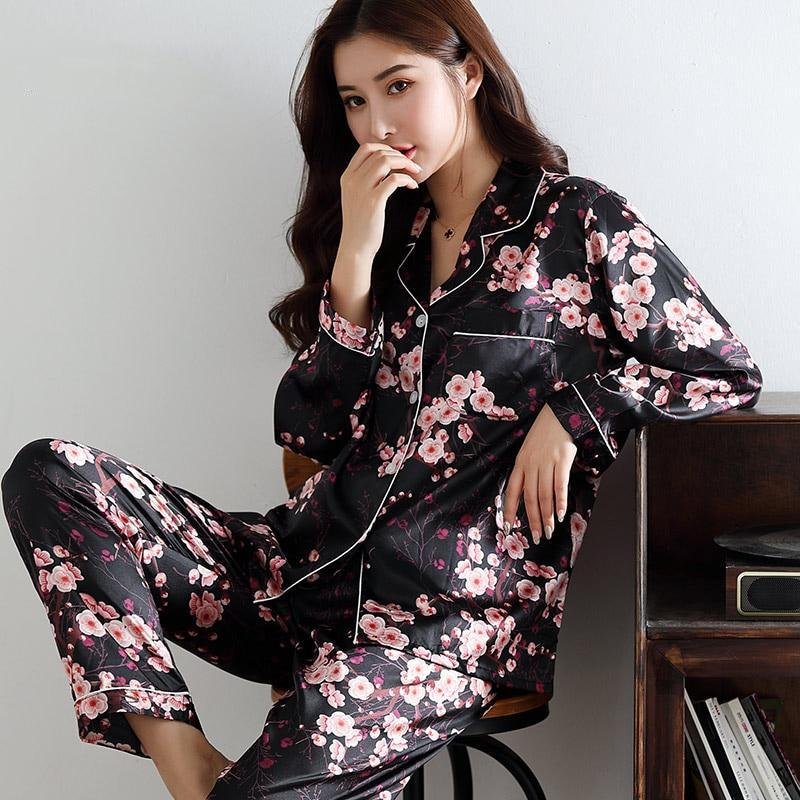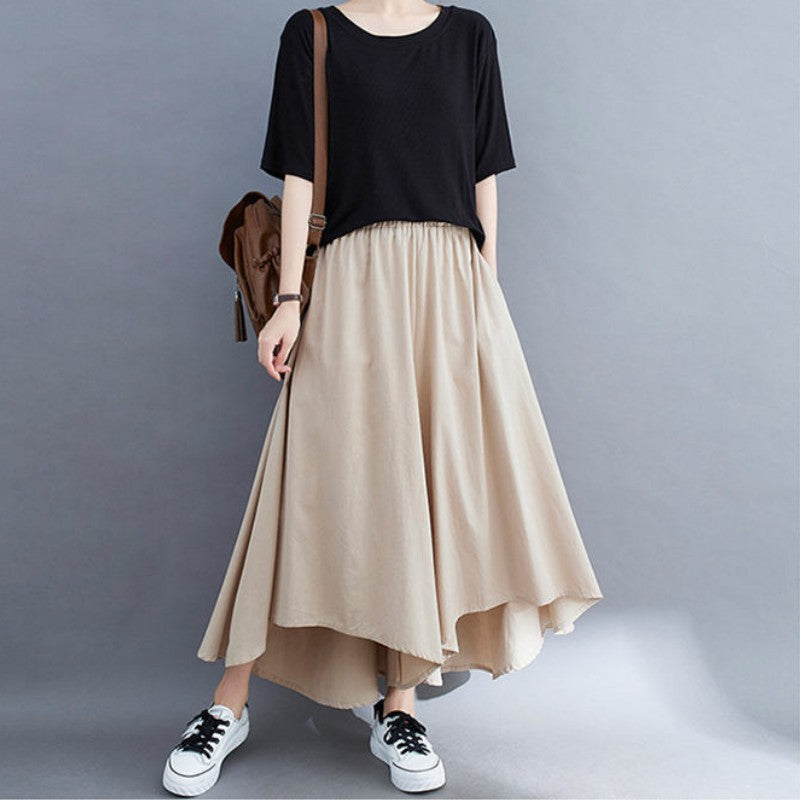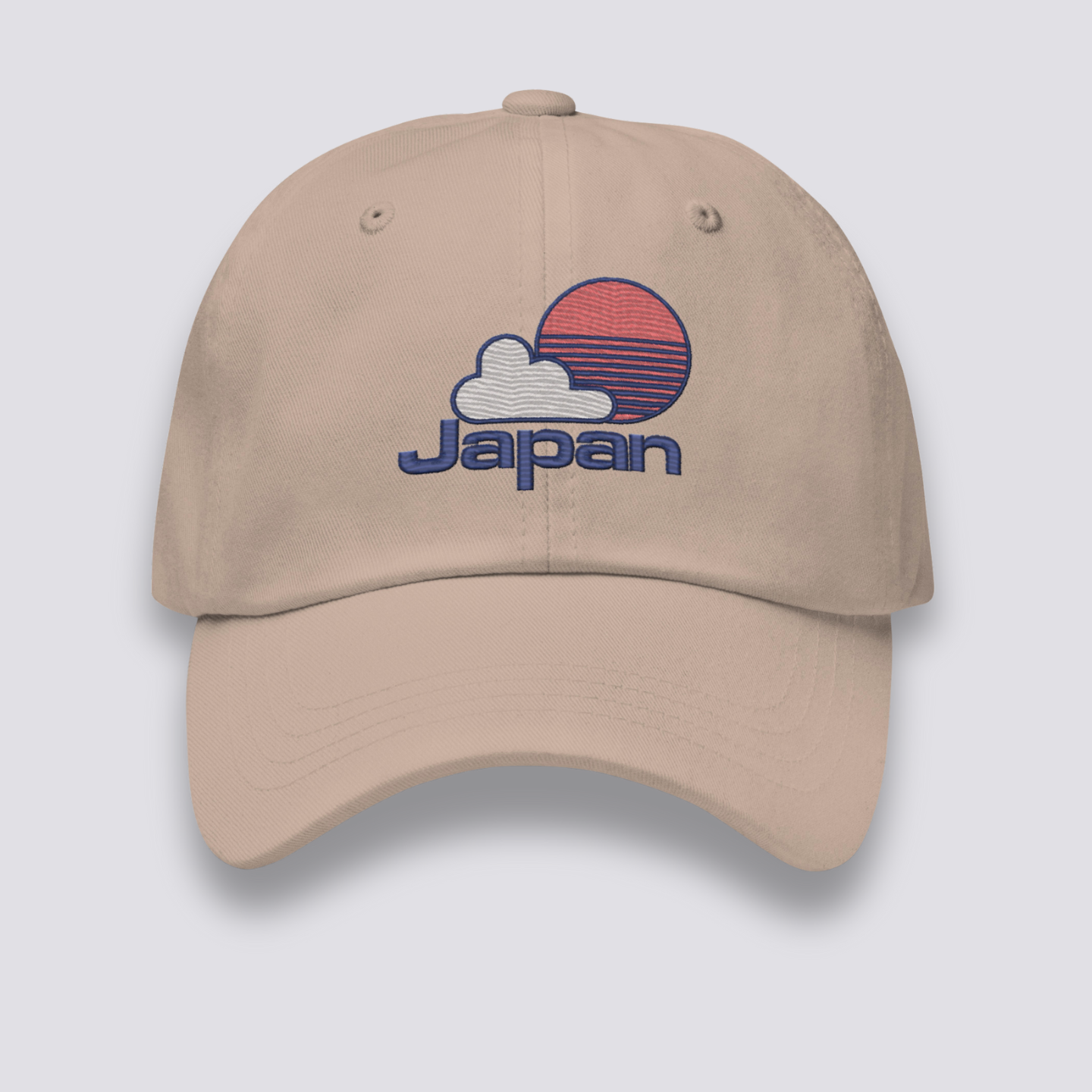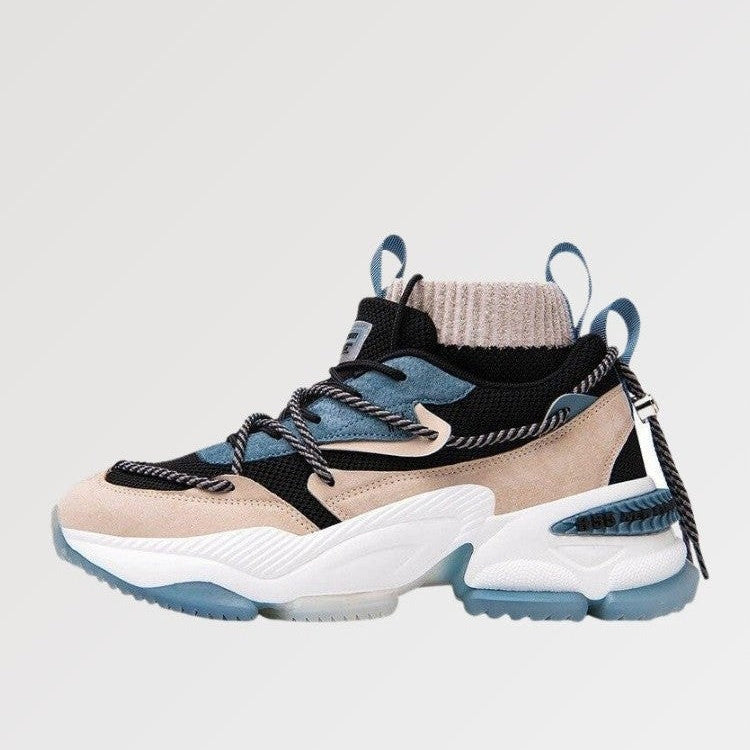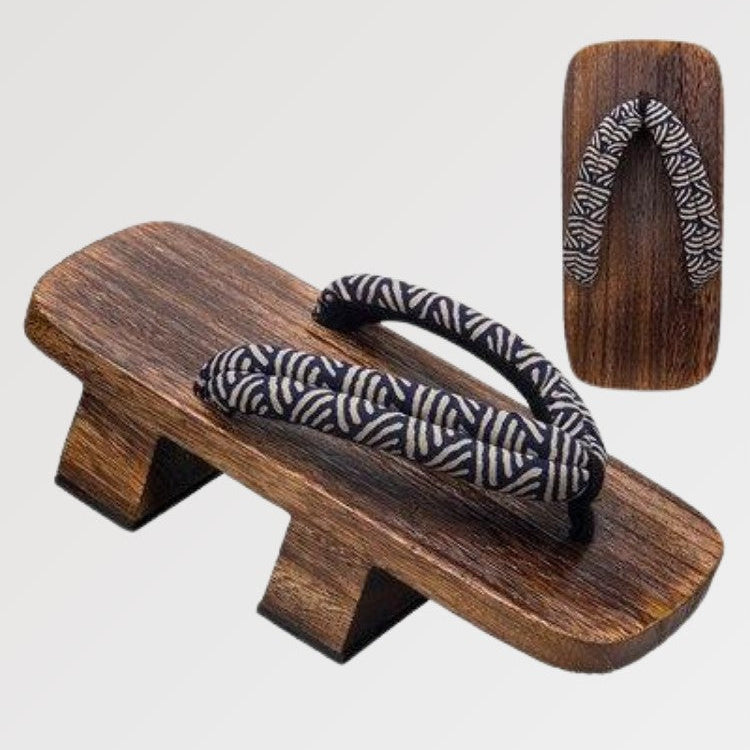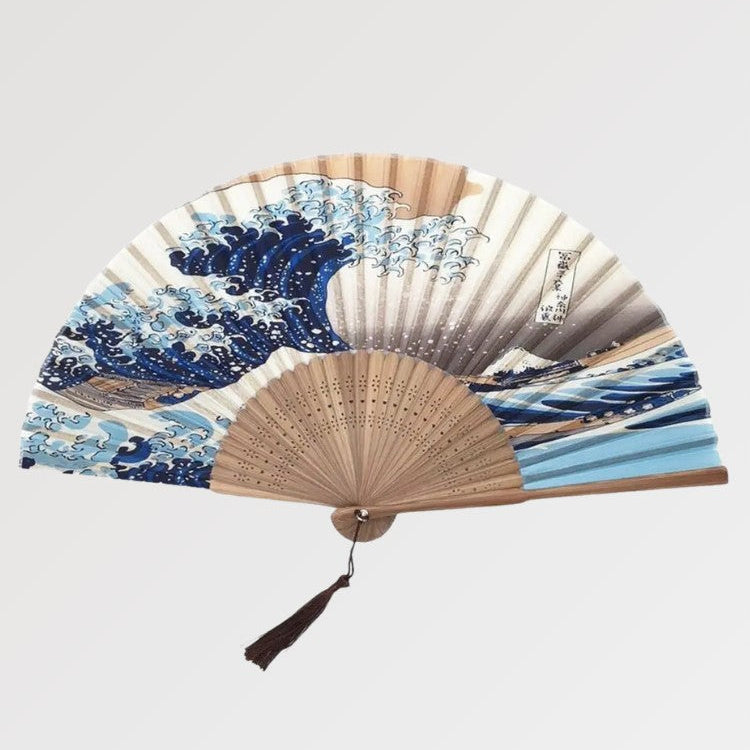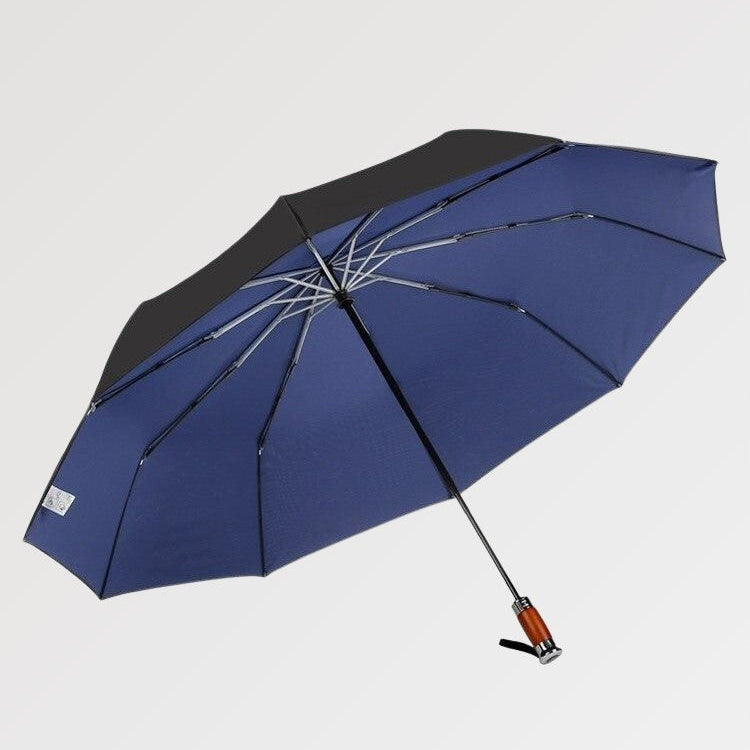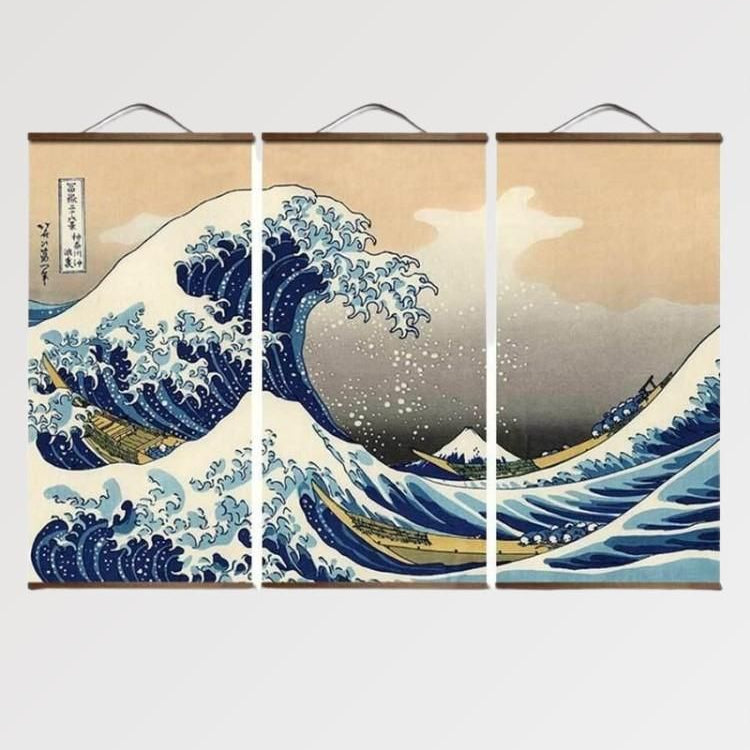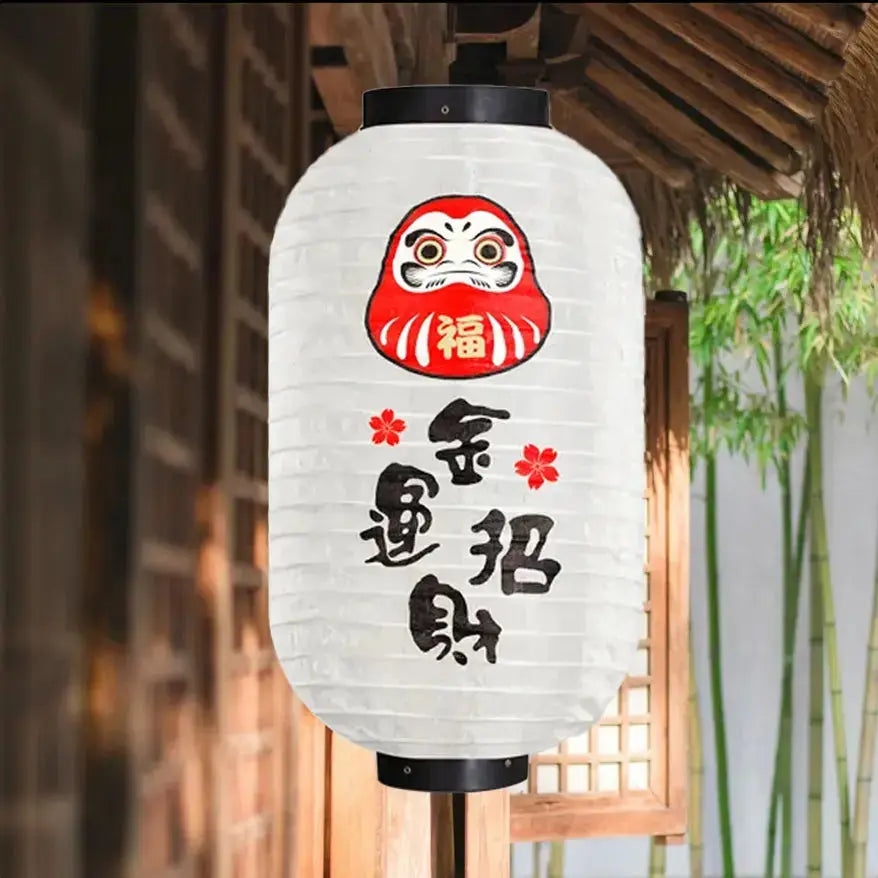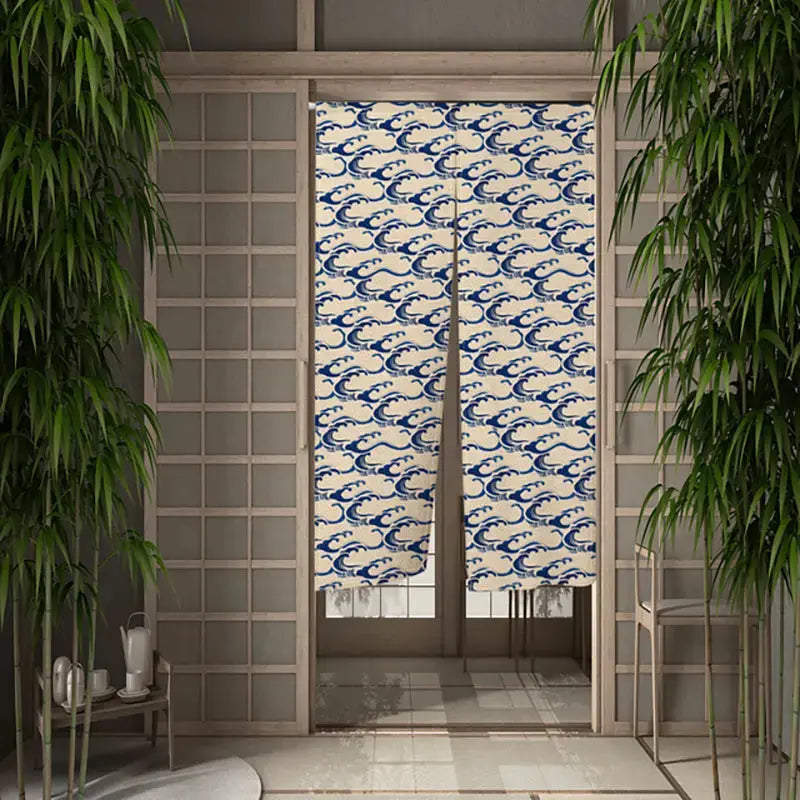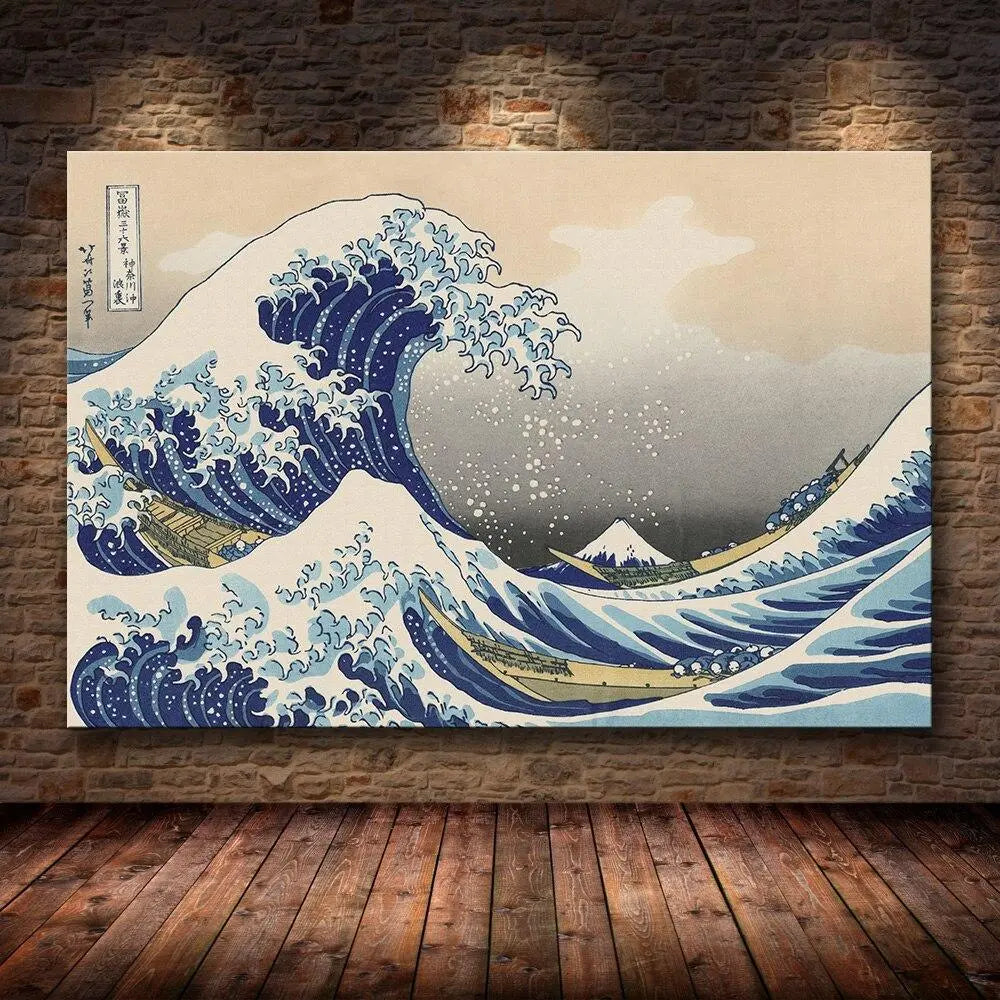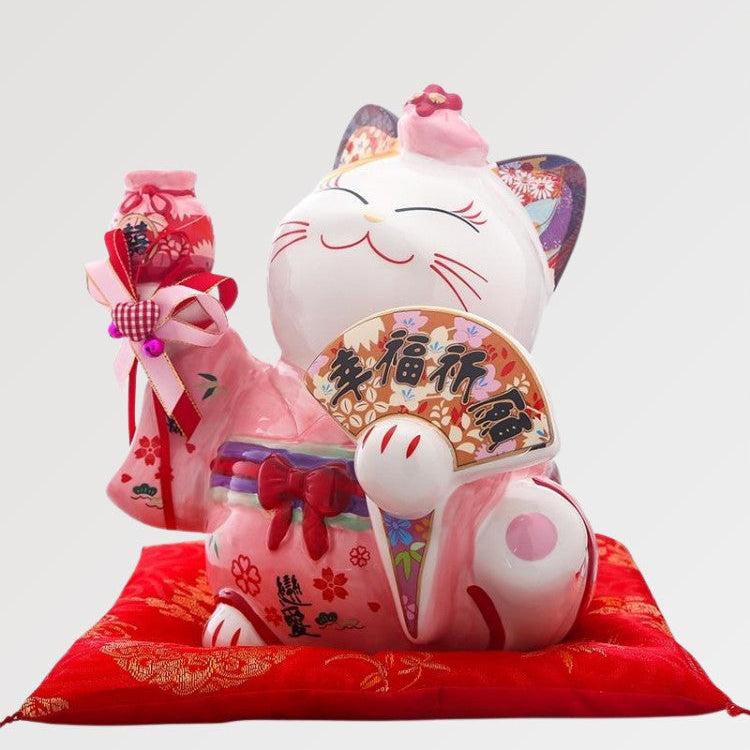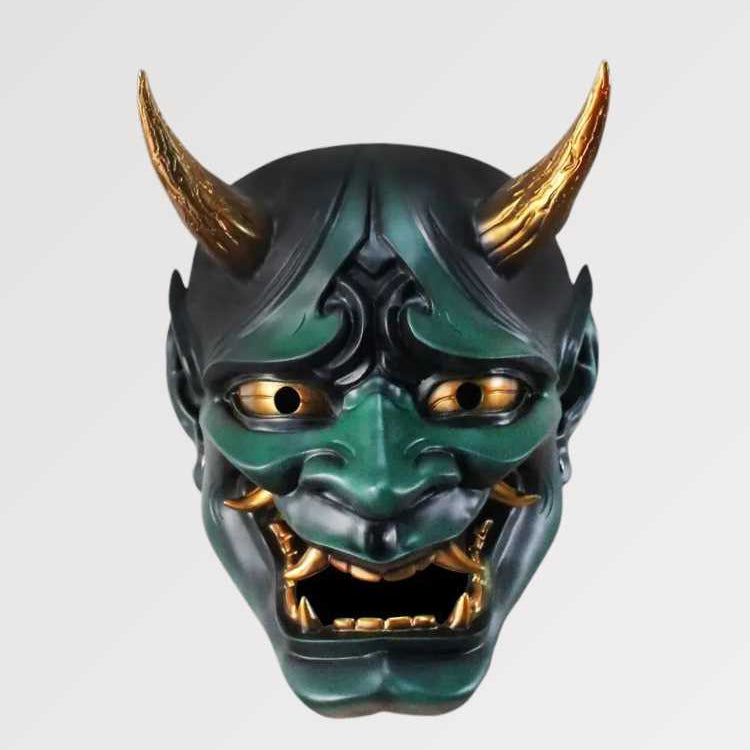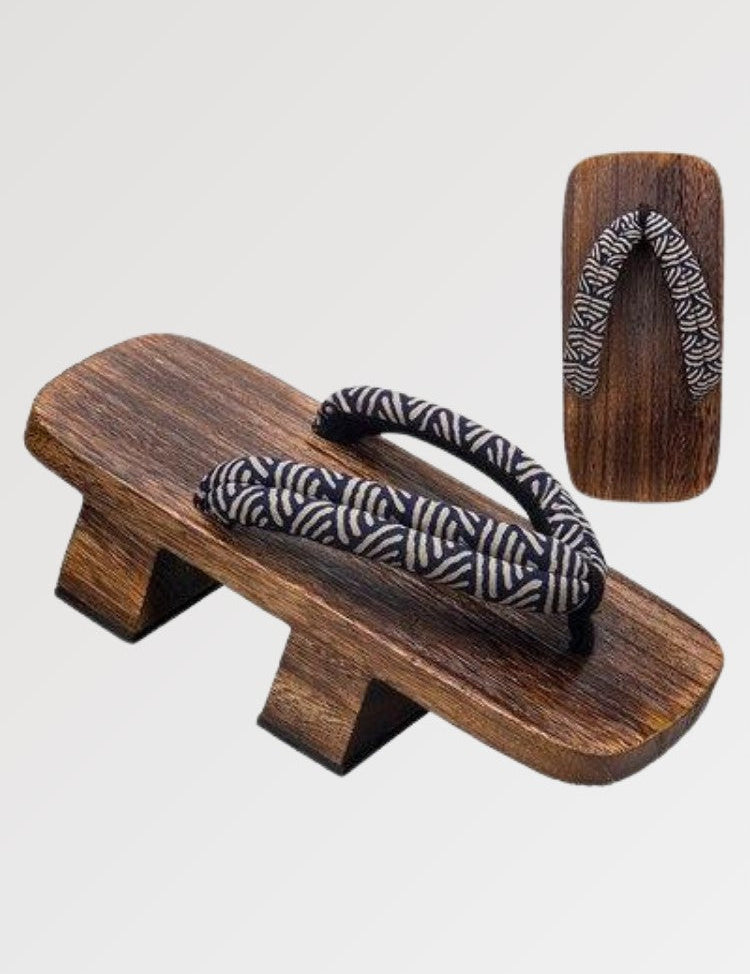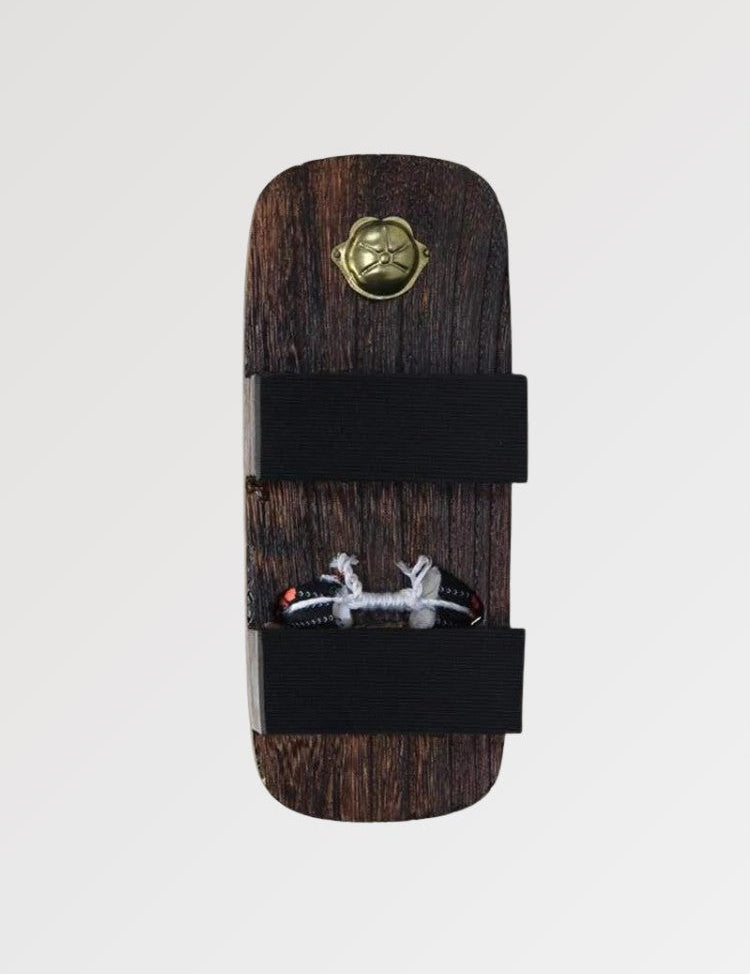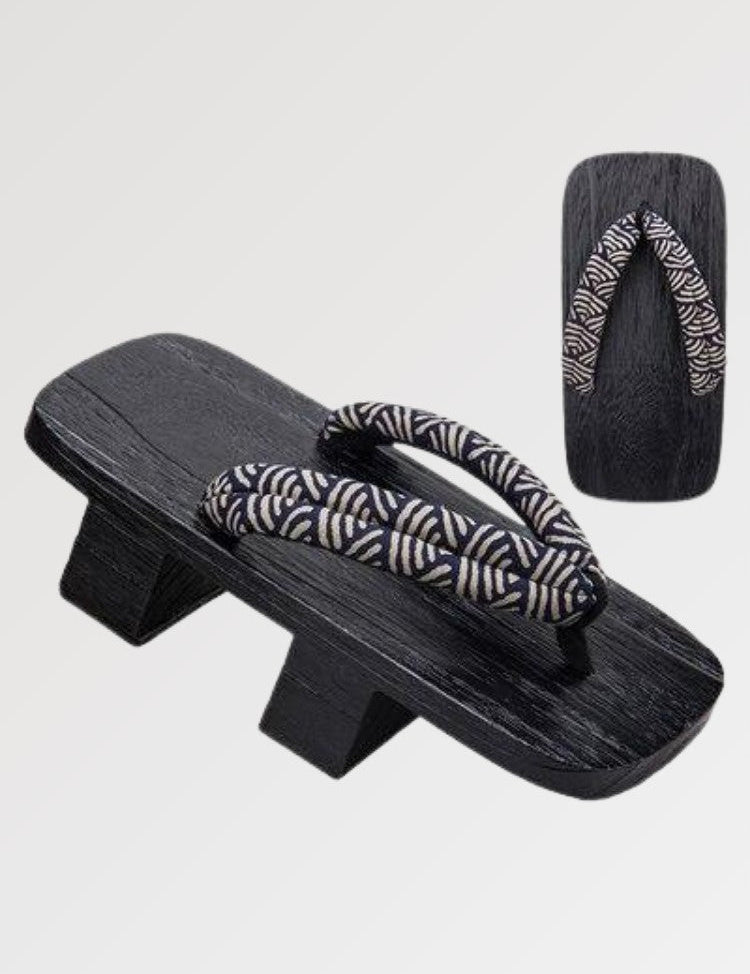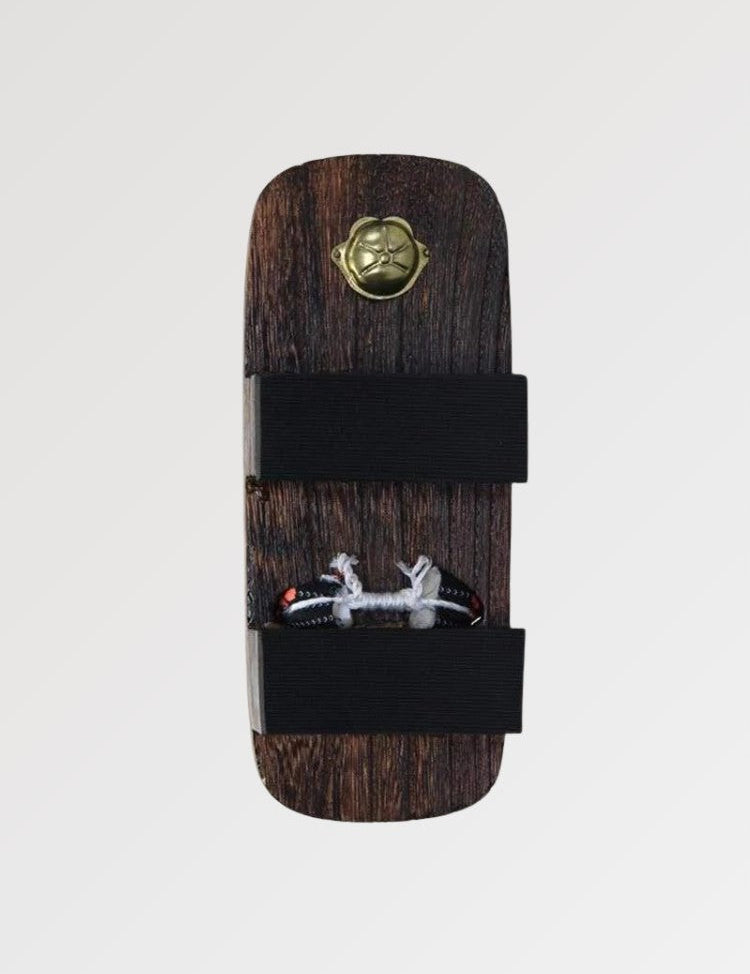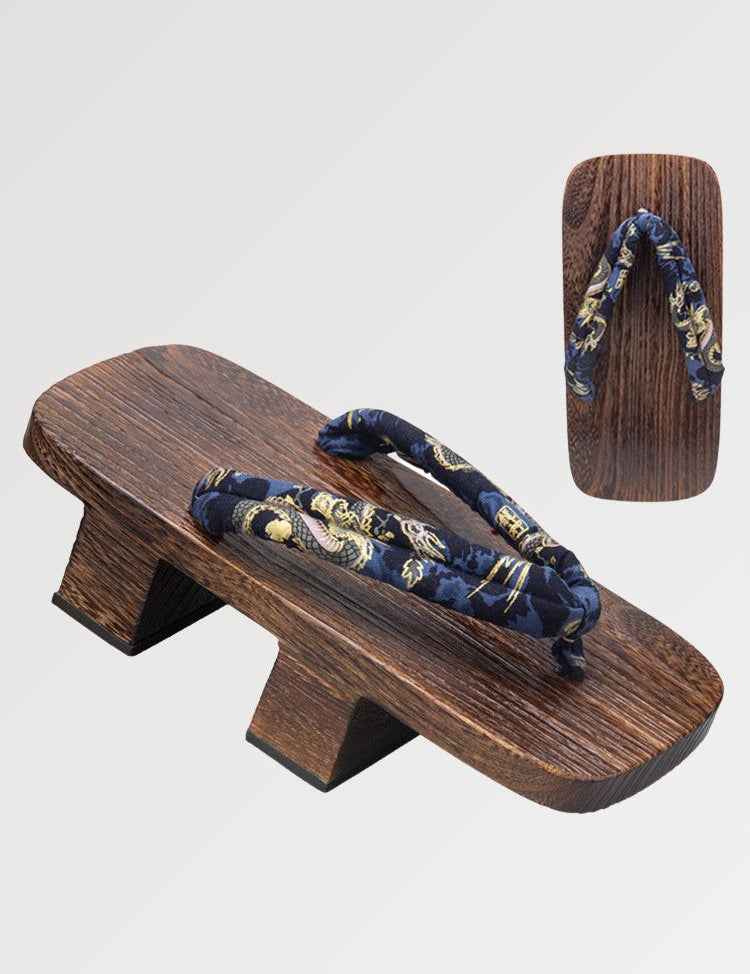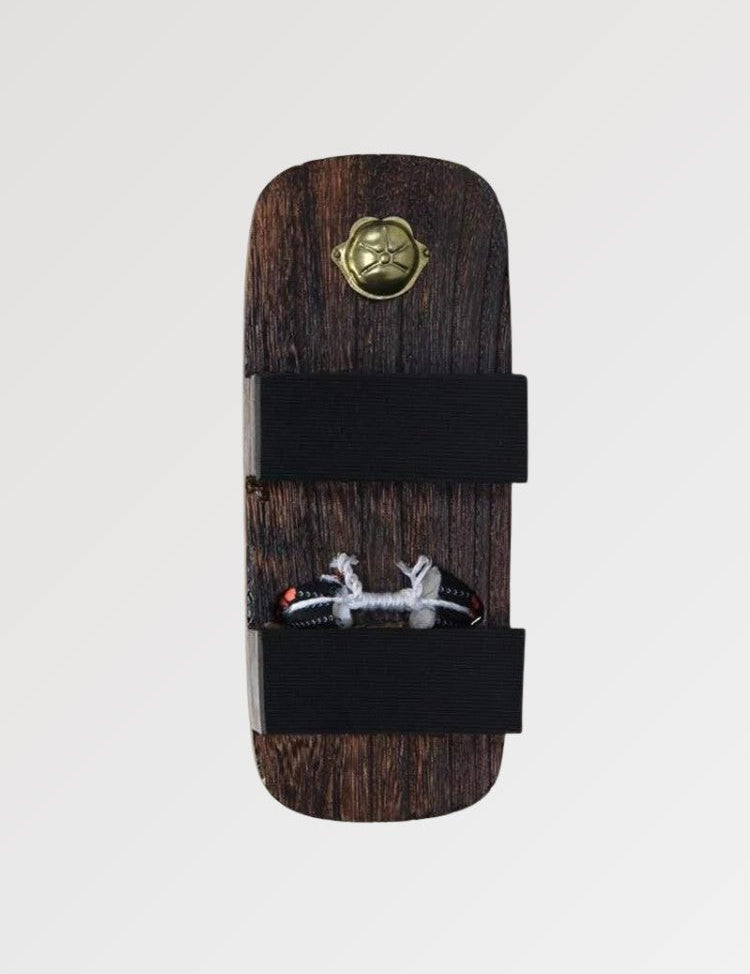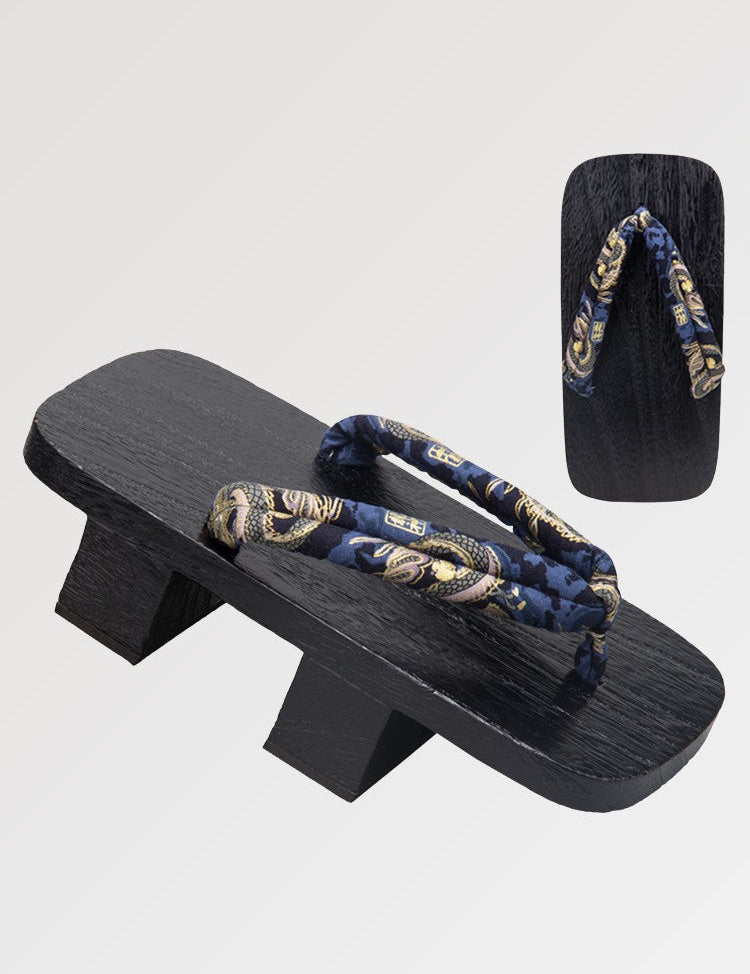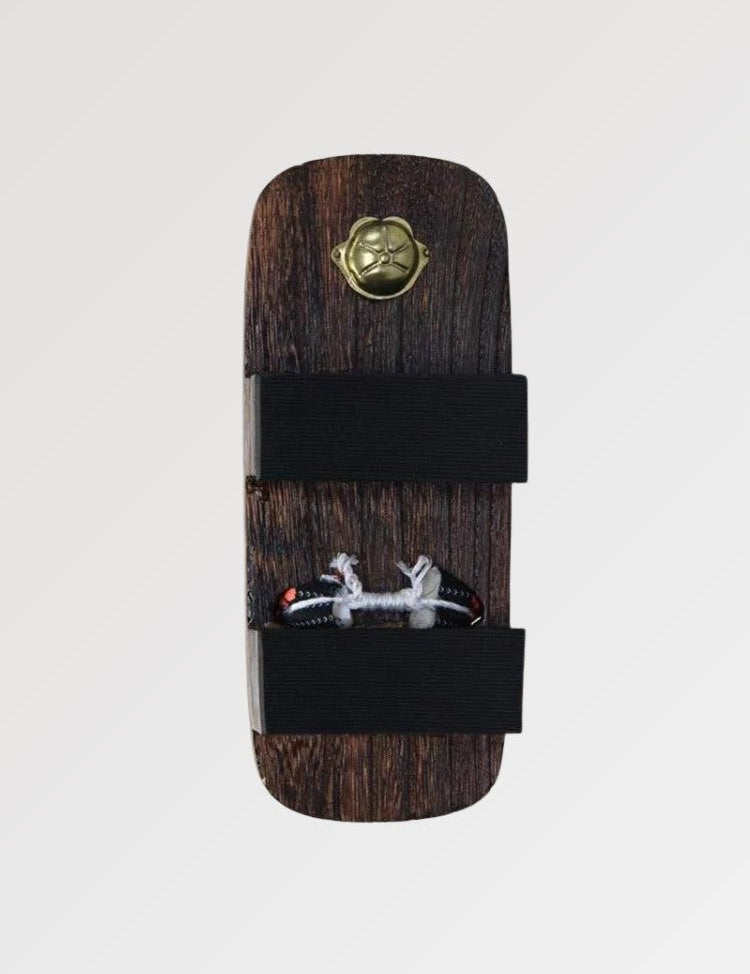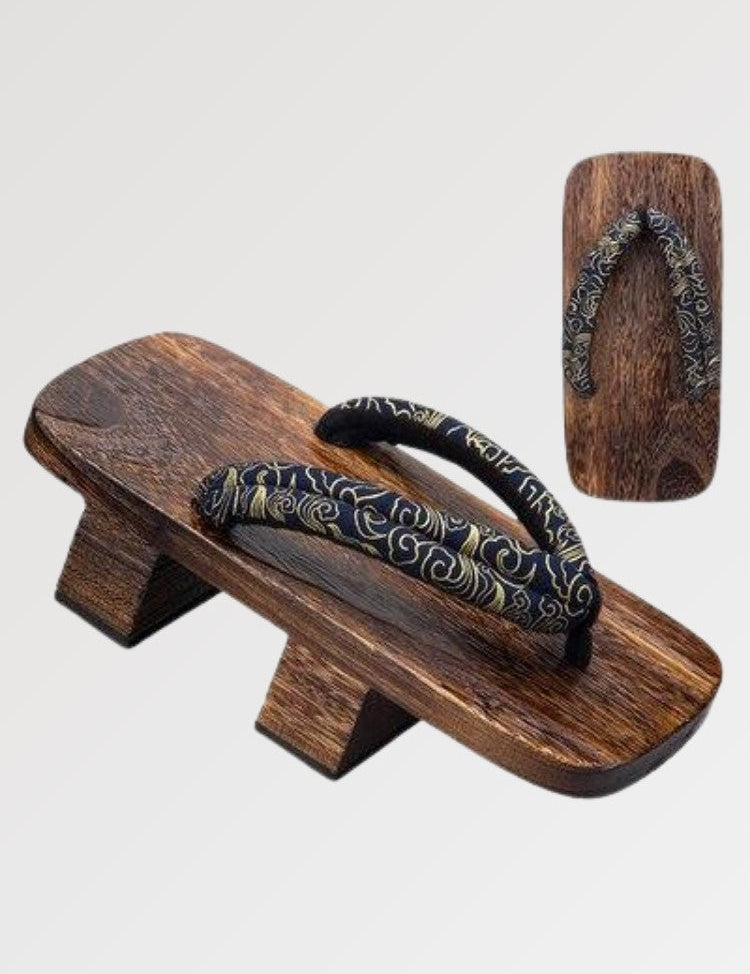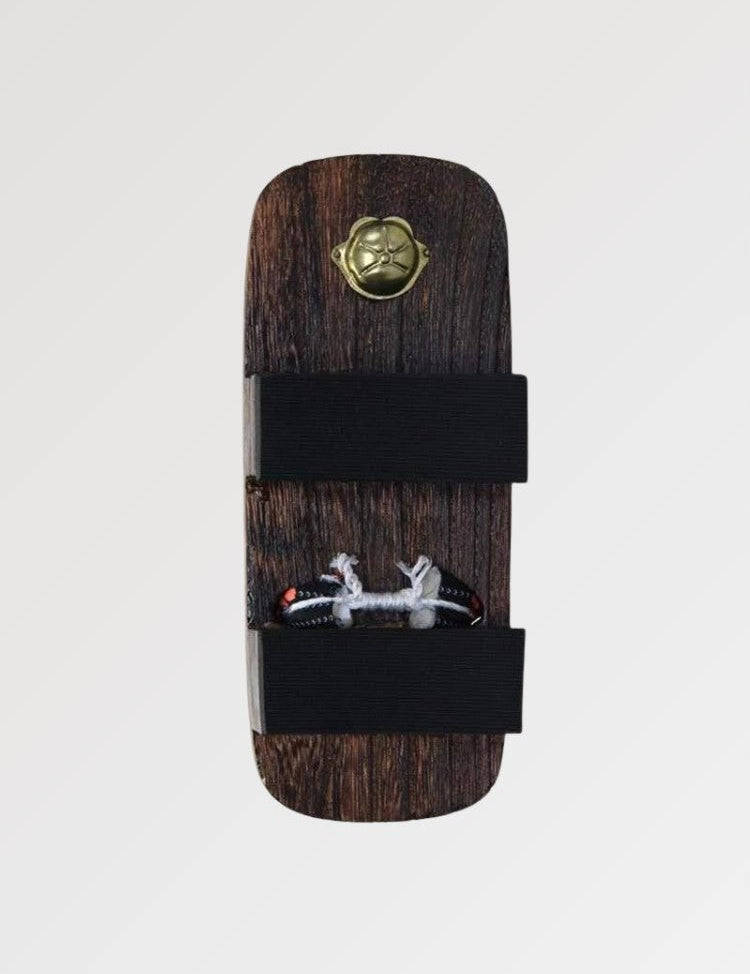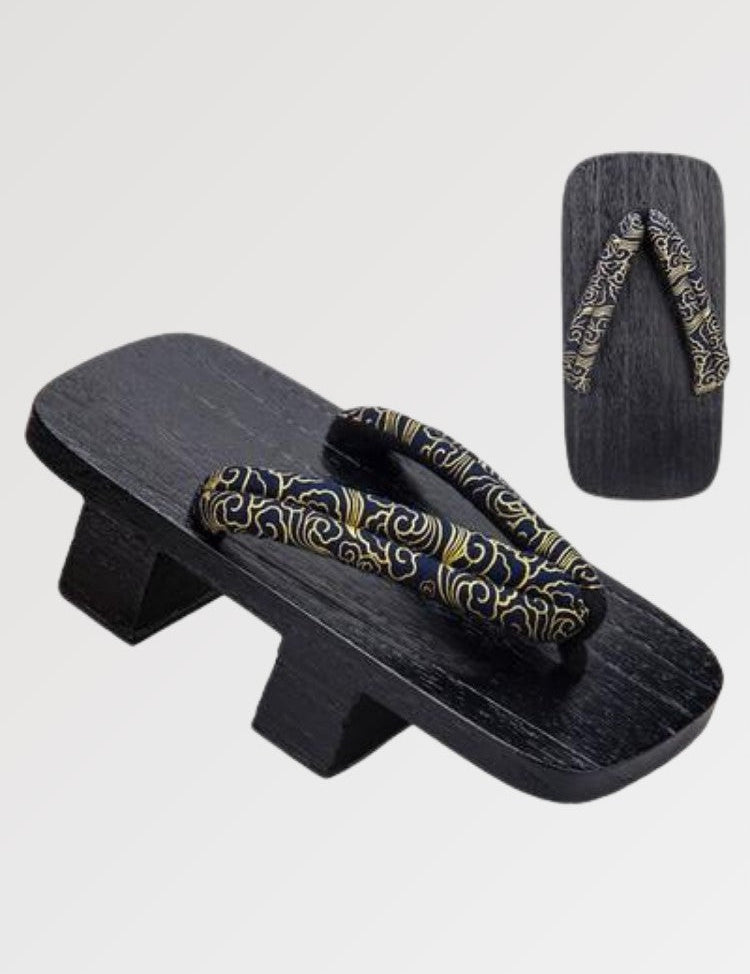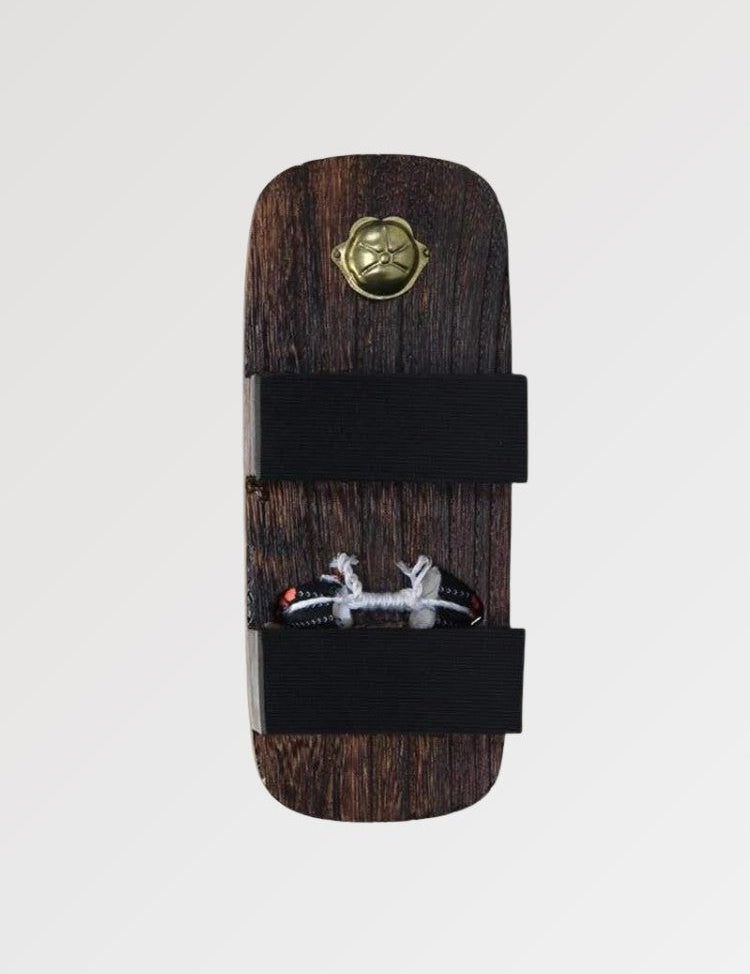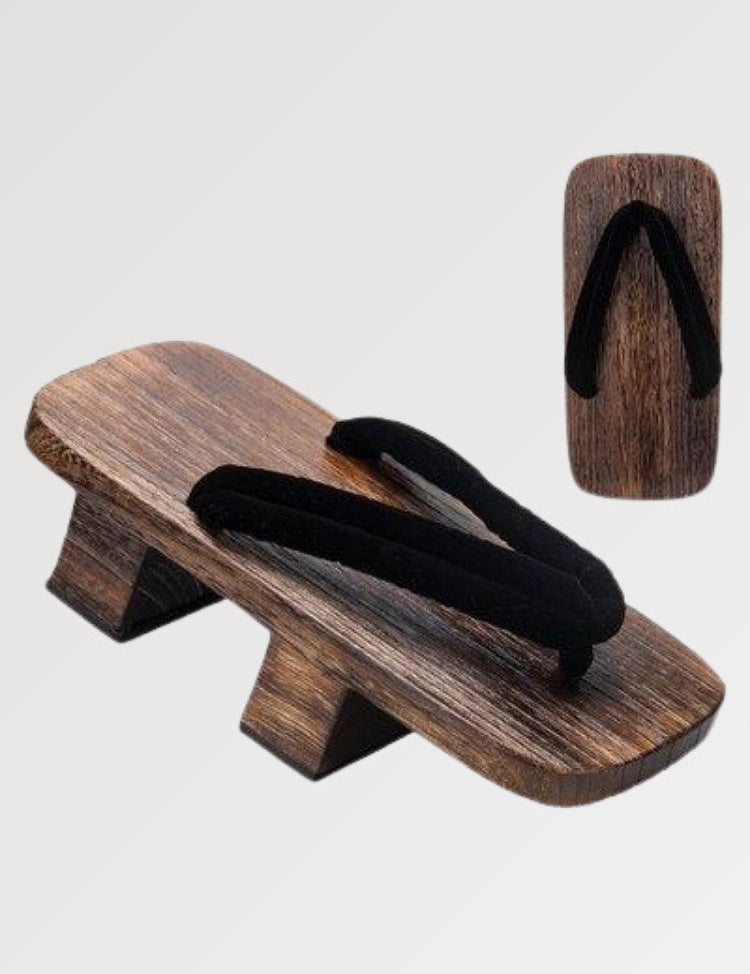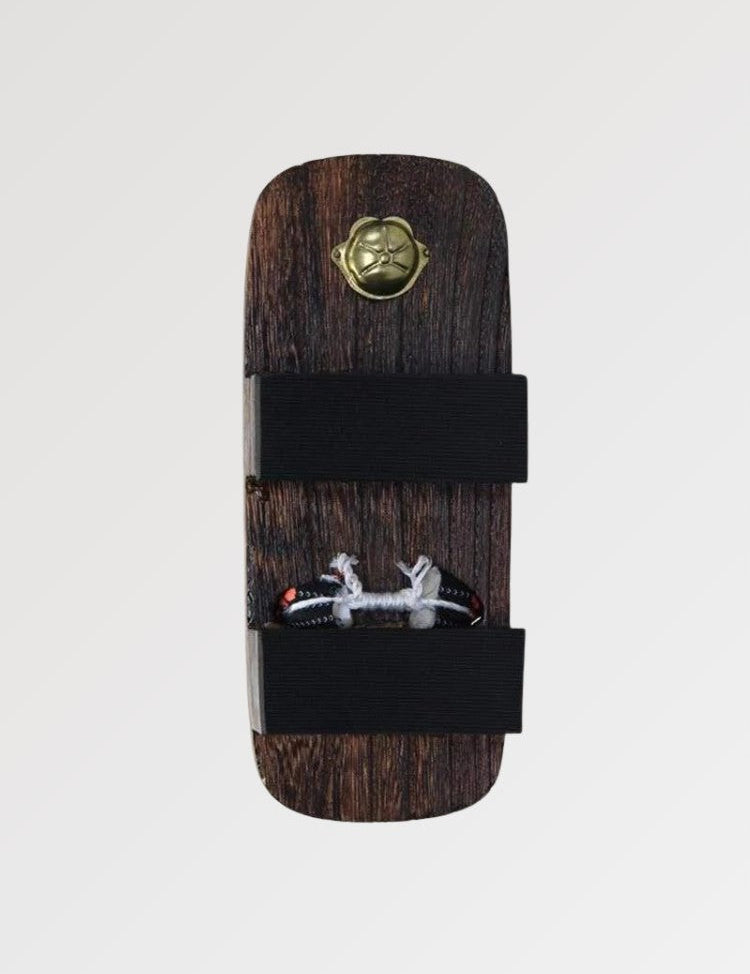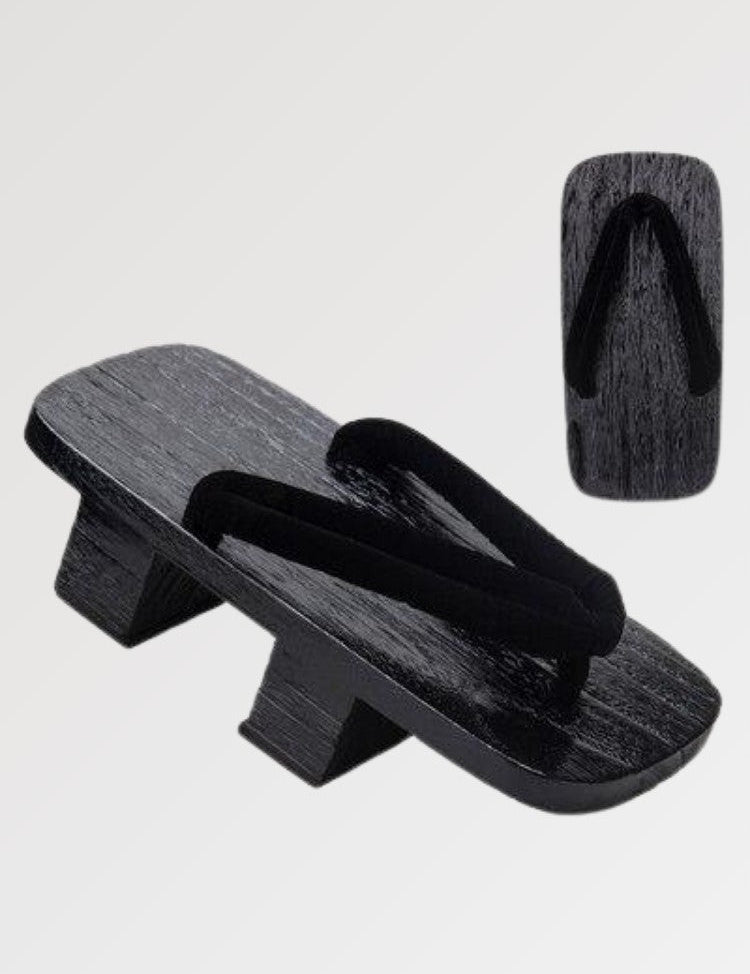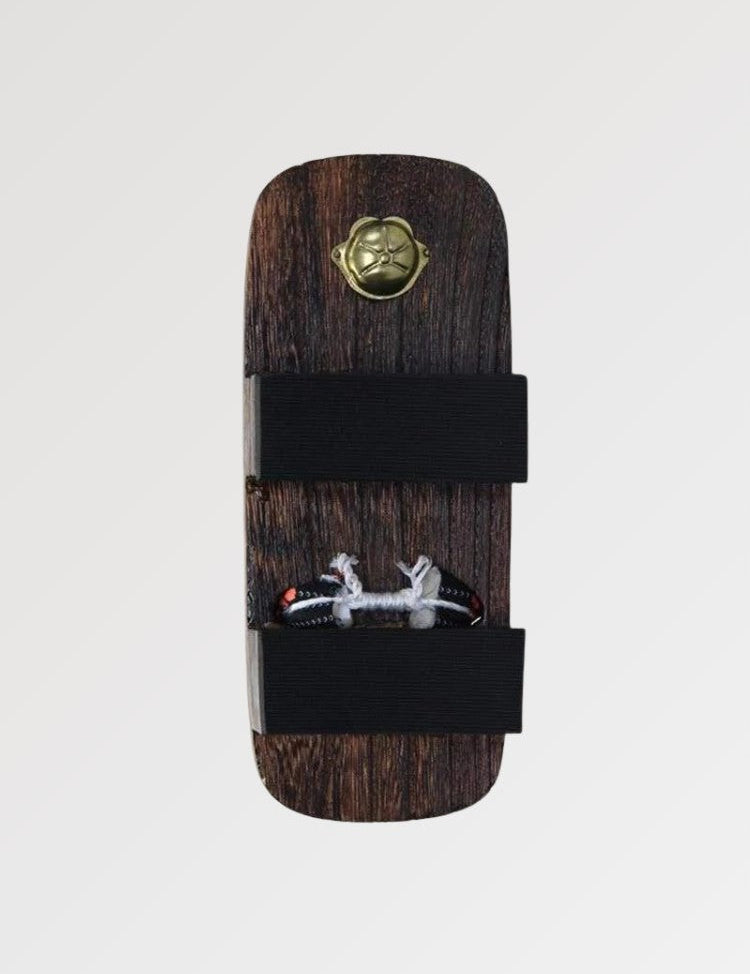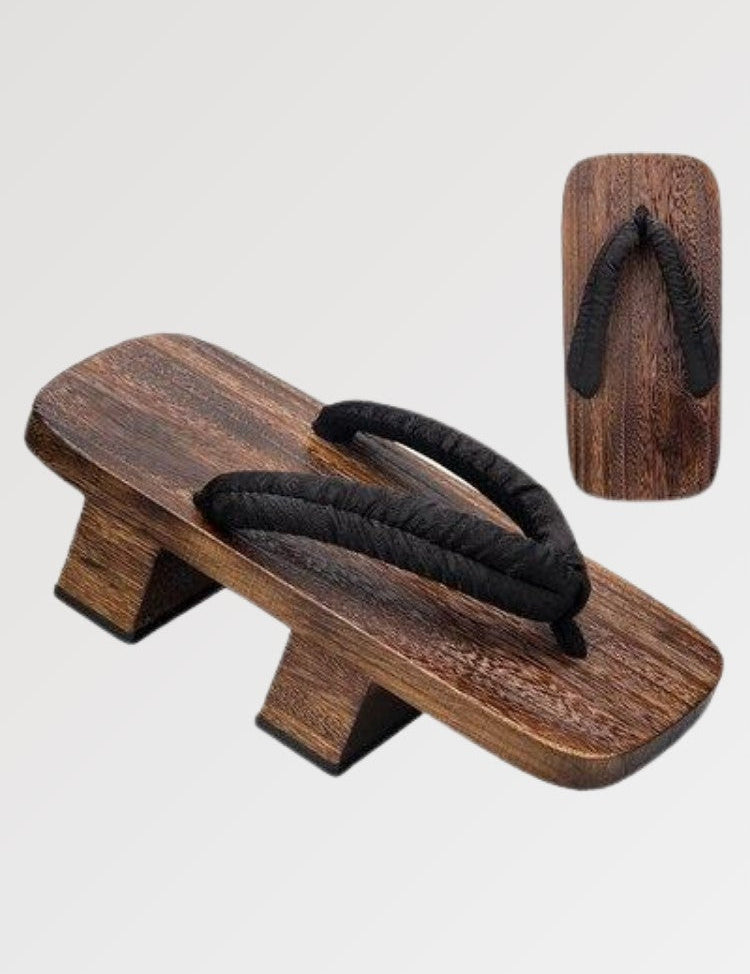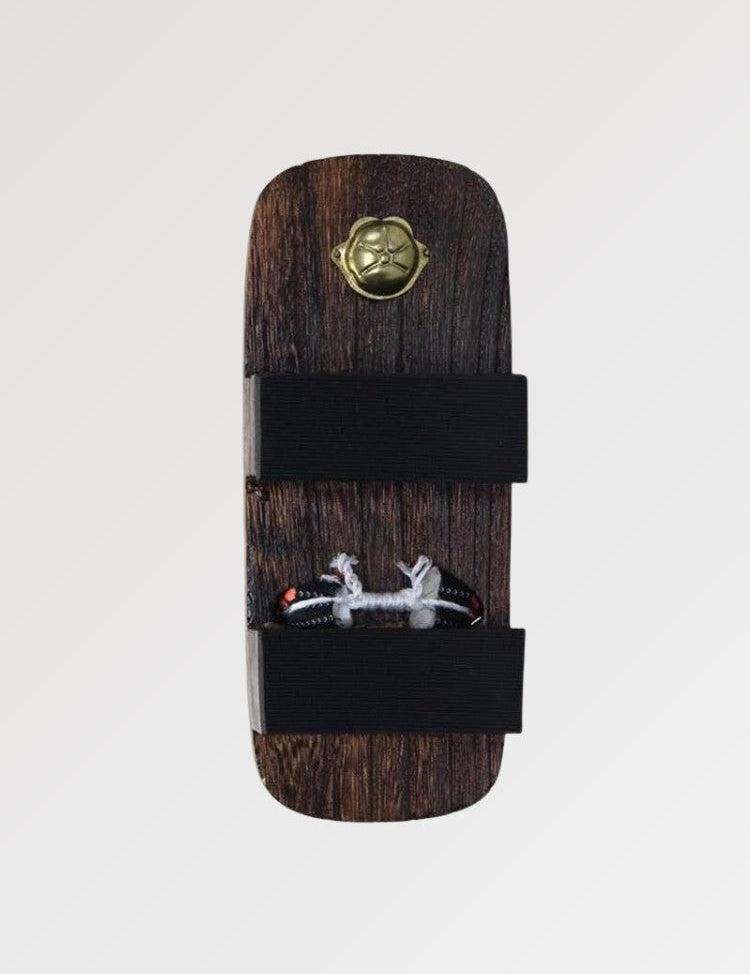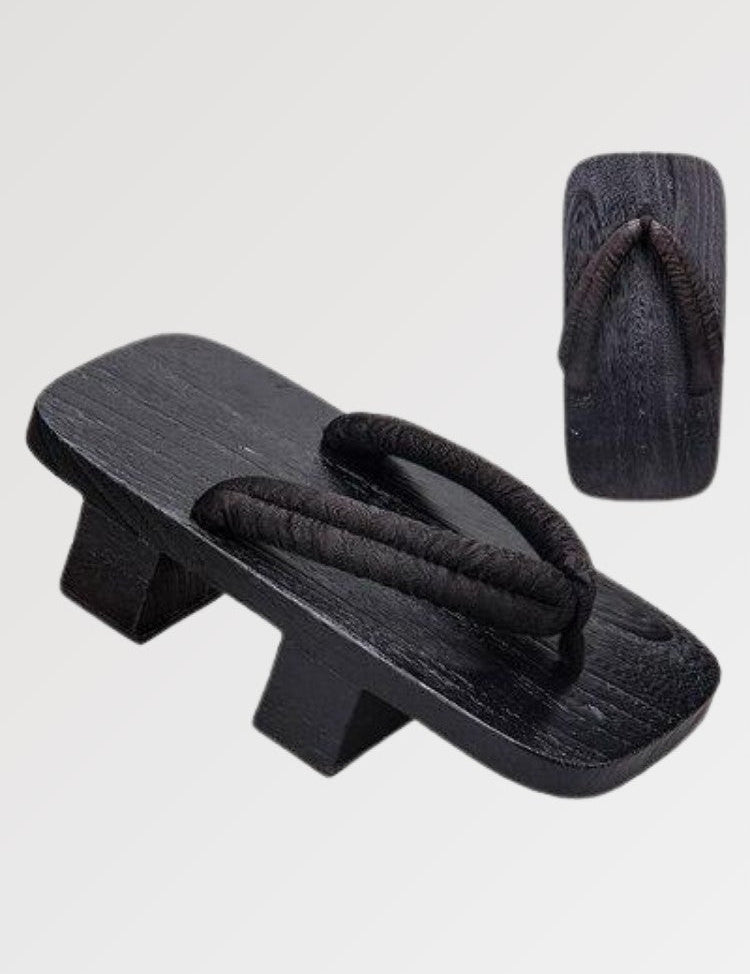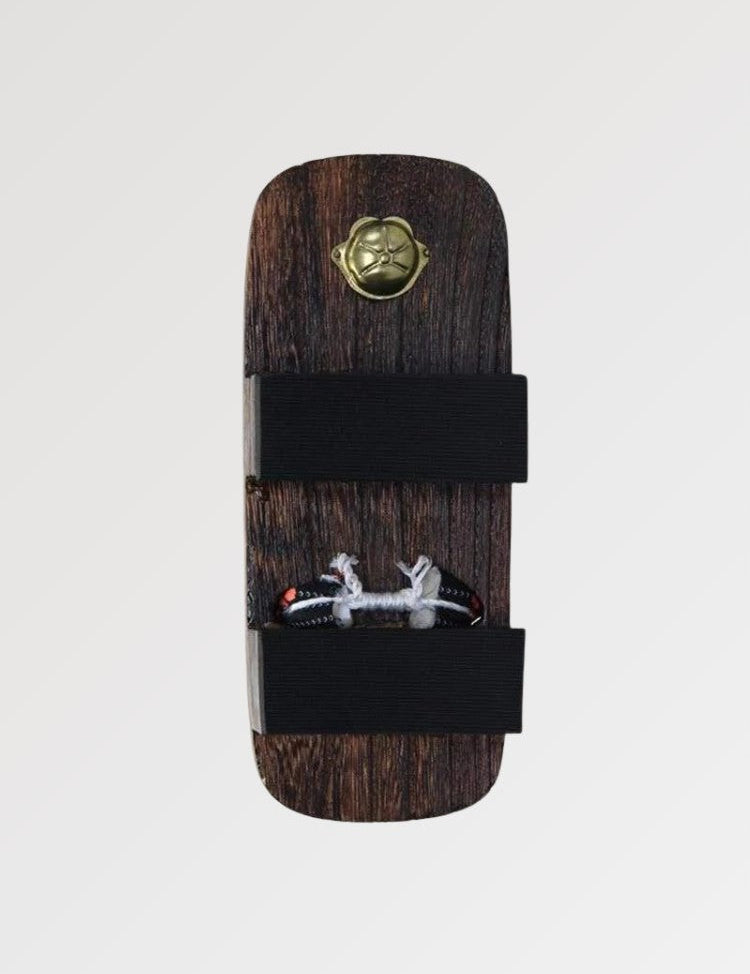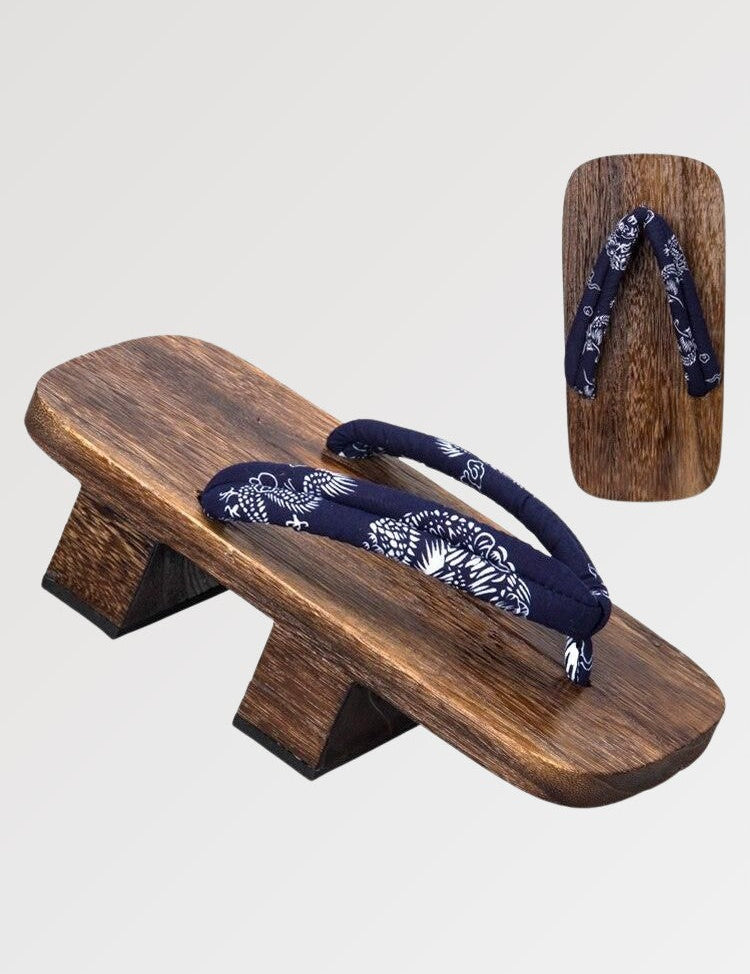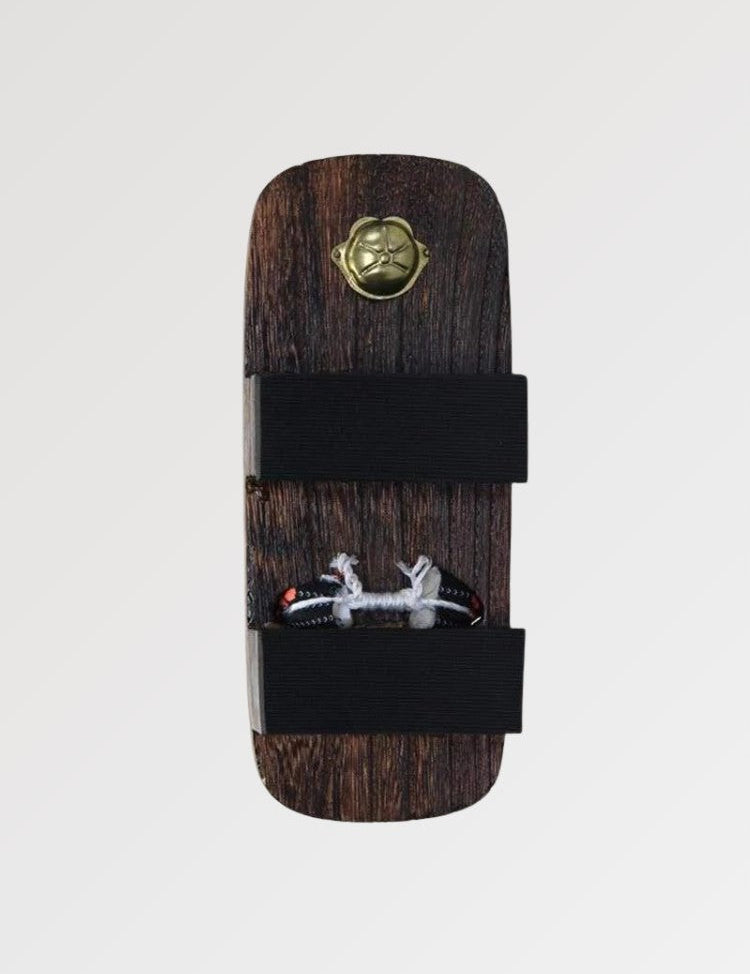Discover all our japanese geta thanks to our large collection of japanese sandals and their famous wooden soles for men and women!
The Geta, traditional Japanese shoe
Geta shoes are a form of traditional japanese shoes, usually made of wood. In terms of design, you could say that geta are somewhere between a beach flip-flop and a Dutch clog! These wooden sandals are traditionally worn in Japan with a Kimono, a Jinbei or a Yukata during festivals or any other kind of ceremonies. We often find it at the feet of Geishas during inaugurations or traditional celebrations.
Most geta consist of a solid wooden sole on top called the dai, and two smaller pegs on the bottom, located closer to the front of the shoe. The pegs are called ha, which means tooth. Geta are worn much like beach sandals or flip-flops, with a fabric strap, a hanao, placed between the wearer's big toe and second toe.
Here is a brief summary and an explanatory diagram to make it easier for you:
- The "Hanao": Corresponds to the fabric strap used to hold the foot.
- The "Dai" : The wooden platform on which your foot is positioned.
- The "Ha": Refers to the wooden teeth or bars that support the Dai.
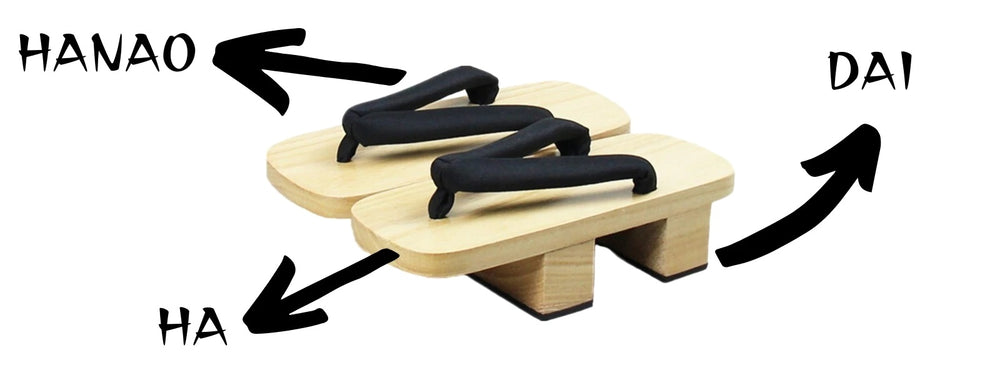
Originally, geta were created with practicality in mind: their elevated design allowed the wearer to rise above land, water, and even snow, or to keep the kimono off the ground so that the garment never got dirty. Throughout Japanese history, until the early 20th century, geta was one of the most common forms of footwear, worn by people of all ages. With such a long history, the geta has taken on many different forms and styles.
The shape of these 19th century geta is similar to those you see on the streets today. These are quite special, however, as they feature incredibly ornate dragon-shaped carvings. Made of thick, rustic balsa wood, they are finished with a gray ostrich rod on the strap. Given the knowledge and materials used, these shoes were probably intended for someone of high social standing.
The different types of Geta
As culture has greatly advanced in Asia, and especially in Japan, there are many different forms of geta nowadays. Each of the geta we will talk about below are adapted to particular events or social status. However, it remains essentially the basics with its wooden sole and prongs as well as its soft cloth strap. Whether it is high or low, with one tooth or two, with a personalized strap or not, the models we are going to see will remain essentially in a japanese spirit!
- Koma Geta: Also called classic geta, are the most common geta nowadays. Usually made of lightweight paulownia wood, koma-geta feature the classic two-pronged geta design. Men's geta tend to have a rectangular shape, while women's geta often have more oval curves. These geta are most often worn with a yukata during the summer.
- Senryou geta: Also called nomeri-geta, have a slanted front tooth. Since geta are designed to be tilted forward when walking, the slope is intended to make them easier to wear. While koma-geta become easier to walk on after the teeth have worn down a bit over time, senryo-geta are shaped to perform well from the moment they are created.
- Tengu geta: Easily recognizable, tengu geta have only one tooth placed in the center of the sole. Moving around in this kind of japanese wooden sandals requires a lot of training and balance and is usually reserved for traditional theater actors.
- Ukon geta: A more modern geta that has a lower profile with a contemporary design, much like a wedge sandal. Not as high as koma-geta, with a wider non-slip sole, these are much easier to slip on and are popular with young yukata wearers. They are like ordinary sandals and can be worn without discomfort in the summer season!
- Ashi da: Or high geta is another geta that can be found even in today's Japan. With a much simpler hanao than other geta, these imposing sandals can change the way you see the world! In the past, ashi-da were popular with male school children, and were often seen associated with Gakuran "classic school uniforms".
- Pokkuri geta: or okobo-geta, do not have teeth like other geta and instead have a slanted block shape. They are seen adorning the feet of maiko (geisha apprentices) and are part of a girl's Shichi-go-san outfit. The height of the pokkuri-geta allows the wearer to walk without staining the hem of the official kimono, but its shape forces it to be worn in the street! A similar but lower and simpler model is the zori, which nowadays tends to be the shoe of choice for kimono outfits on formal occasions.
How to wear geta shoes?
Geta are most often worn with yukata. Yukata is a summer outfit and is traditionally worn without socks. But this is not a hard and fast rule: if your feet get cold, put on tabi socks to let the geta strap pass between your toes. If your feet become loose from the sole while walking, do not walk any longer, as this may cause injury. To prevent this, simply tighten the strap by pulling the threads under the "Dai" between the two "Ha".
Geta tend to be much smaller than ordinary shoes. Having part of your heel protrude from the back of the sandal is considered a perfect fit according to the Japanese. However, geta are not limited to japanese clothing, of course! Geta can be worn with modern, western clothing, just like any other sandal.
While your toes may be a little chilly in the winter, geta are the perfect footwear to protect you from the hot asphalt of summer and the soggy sidewalks of the rainy season! If you don't want to wear the geta as a full traditional outfit, it is also possible to wear them together with the famous hakama for a more urban and casual look worthy of modern day samurais.
How to walk with geta sandals?
Although geta were once worn every day in the land of the rising sun, getting used to wearing them can take a bit of practice and initiation for a European.
The key to wearing the geta is to get the quintessential karankoron, or click-clack, sound when you walk. Rather than "wearing" a normal shoe, it is best to think of it as "wearing" the geta with your feet, lifting the sandals with your toes and the top of your foot. Also, unlike the heel-to-heel step used to wear heels, geta are best worn when you walk with a toe-to-heel step.
If your feet hurt just thinking about putting on geta, don't worry! Prepare the geta by gently stretching the strap of the hanao, and a touch of talcum powder between the toes can do wonders to keep the nasty blisters away. It's also easier to choose a modern, more comfortable style of geta when you're wearing them for the first time in your life.
